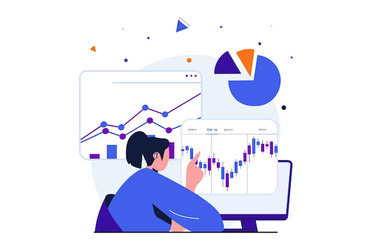As discussed in the earlier article, the stock price of a company is influenced by various factors, one of them being the fundamentals of the company, and the other can be said to be the macro factors.
Often, the market is considered to be free from governmental activities. However, in reality, governments do step in to stabilize markets, regulate transactions, provide institutional frameworks, etc. Governments can also intervene when markets fall through their emergency measures.
Change in market trends due to inflation
Governments are the only institutions that can legally create their respective currencies and add the effect of inflation gradually. Inflation increases the profitability of the company as the companies charge more for their products.
Investors consider the profits of a company as an essential element and thus due to the inflated corporate profits they purchase the shares in large volumes which causes share prices to shoot up, but the long-term impact is an erosion of value across the board.
Market trends updation due to changes in interest rates
In order to curb inflation, the government raises the interest rates so that borrowers tend to take lesser loans and there is less flow of money in the market. As a result, the investment is decreased in the markets. On the contrary, when inflation is falling, the government or the Reserve Bank of India (RBI) lowers the interest rates, making borrowing cheaper. Hence, it encourages companies and individuals to borrow and buy more and the investment is also increased.
Stock trends due to government schemes and subsidies
Subsidies and incentive schemes are provided by the government to essential companies. In the case of a subsidy, the government taxes the general public and gives the money to a chosen industry to make it more profitable. In the case of a tariff, the foreign products are being levied tax to make them more expensive, allowing the domestic suppliers to charge more for their products.
Government support of an industry is a powerful incentive for banks and other financial institutions to give those industries favorable terms. This preferential treatment from the government and financing means more capital and resources will be spent in that industry, even if the only comparative advantage it has is government support.
An example of this can be the production-linked incentive (PLI) scheme that the government has come up with to provide electronic manufacturing companies an incentive of 4% to 6% over specified incremental sales for a period of 5 years.
REGULATIONS & TAXATION
Fiscal policy and the expansionary regulations imposed by the government will lead to an increase in demand and employment. The consumer spends more which in turn increases the sales and earnings of the companies. Thus, the stock of the company rises.
Monetary policy works the other way around, by improving financial conditions rather than demand. Lowering the cost of money will increase the money supply pushing down interest rates and borrowing costs, which we have already discussed above.
The corporate taxes imposed by the government also have an effect on the markets by shrinking the stock prices. It is assumed that, when companies are taxed with higher tax rates, the earnings available to the investors will decrease and so will the future growth of the company, and thus the stock prices sink. Also, when the government raises the tax rates on the capital gains generated on the investments, fewer people will tend to invest, affecting the markets adversely.
A very recent example that can be quoted is the windfall taxes charged on the oil companies for reporting higher than above-average profits as they continue to charge higher prices from the consumers. It is charged above the usual taxes paid by them in their respective countries.











 1,499
1,499
